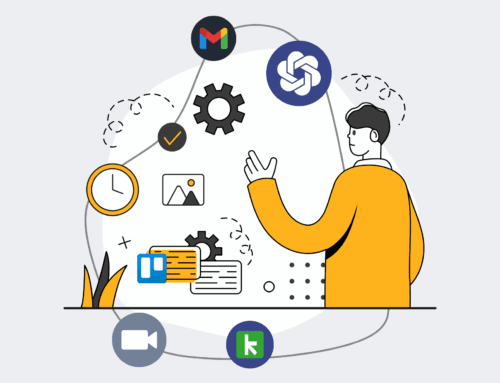Automating HR Reporting: Global Talent Solutions’ Journey to Real-Time Insights with Custom Webhook Feeds
Client Overview
Global Talent Solutions (GTS) is a dynamic, mid-sized recruitment and HR consulting firm, specializing in connecting high-caliber professionals with leading companies across various industries. With a workforce of approximately 350 employees and a vast network of contractors and external partners, GTS prided itself on its personalized service and deep industry knowledge. However, as the company grew, its internal HR operations began to strain under the weight of manual data processing and a fragmented reporting infrastructure. Their existing HR Information System (HRIS) was robust for basic payroll and employee management but lacked the agility and real-time analytical capabilities required for strategic decision-making in a fast-paced environment.
The company’s leadership was keen on leveraging data to optimize workforce planning, identify talent trends, and enhance employee engagement. Yet, their current setup made these aspirations difficult to achieve, leading to delays and inaccuracies in critical HR reports.
The Challenge
Before partnering with 4Spot Consulting, Global Talent Solutions faced a series of significant hurdles in its HR reporting landscape:
- Fragmented Data Sources: HR data was siloed across multiple systems, including the core HRIS, an Applicant Tracking System (ATS), a separate performance management tool, and various departmental spreadsheets. This made a unified view of employee data virtually impossible.
- Manual Report Generation: Producing comprehensive HR reports (e.g., turnover rates, time-to-hire, diversity metrics, compensation analysis) was a labor-intensive process. HR analysts spent countless hours manually extracting data from disparate systems, cleaning it in spreadsheets, and consolidating it. This often led to human error and consumed valuable time that could have been dedicated to strategic analysis.
- Delayed Insights: Due to the manual nature of data compilation, reports were often days or even weeks old by the time they reached decision-makers. This lag meant that critical insights were not available in real-time, hampering agile decision-making and proactive problem-solving. Identifying emerging trends, such as unexpected spikes in attrition or bottlenecks in the recruitment pipeline, was often a reactive exercise.
- Lack of Customization: The HRIS offered standard reporting templates, but GTS frequently required highly customized reports to address specific business questions or regulatory compliance needs. Building these custom reports was either technically challenging, prohibitively expensive, or simply not supported by their existing systems.
- Scalability Issues: As GTS continued to expand, the volume of data and the complexity of reporting requirements grew exponentially. The manual processes were simply not scalable, creating a significant bottleneck for future growth and efficiency. The HR team was constantly playing catch-up, leading to burnout and a perception of HR as a cost center rather than a strategic partner.
- Data Integrity Concerns: Without automated data flows, maintaining consistent data definitions and ensuring accuracy across all systems was a continuous battle. Discrepancies often emerged, undermining trust in the data and the reports derived from it.
These challenges collectively hindered GTS’s ability to operate efficiently, make data-driven decisions, and truly understand its most valuable asset: its people.
Our Solution
4Spot Consulting stepped in with a tailored automation strategy, focusing on integrating GTS’s fragmented HR systems using custom webhook feeds to create a unified, real-time data pipeline. Our solution was designed to eliminate manual data handling, enhance data accuracy, and provide instant access to actionable insights. We leveraged a powerful low-code automation platform (implicitly Make.com) as the central orchestrator.
The core of our approach involved:
- Webhook-Powered Data Ingestion: We configured custom webhooks within GTS’s primary HRIS, ATS, and performance management software. These webhooks were set to trigger automatically whenever a significant event occurred (e.g., a new employee hire, a status change, a performance review completion, an applicant moving stages). This ensured that data was pushed immediately from its source systems to our central automation platform.
- Centralized Data Hub: The automation platform acted as a middleware, receiving data from various webhooks. Instead of merely transferring data, it performed vital functions:
- Data Normalization: Standardizing data formats, ensuring consistency across different source systems.
- Data Enrichment: Combining data points from different systems to create a more comprehensive record (e.g., merging applicant data from ATS with employee demographics from HRIS upon hiring).
- Data Validation: Implementing rules to check for data integrity and flagging inconsistencies before they entered the reporting system.
- Real-Time Reporting Dashboard Integration: We established a connection from our central automation platform to a new, dynamic reporting dashboard. This dashboard was custom-built to display key HR metrics and allow for interactive data exploration. As data flowed in via webhooks, the dashboard updated in near real-time, providing an always-current view of HR performance.
- Automated Alerting and Notifications: Beyond just reporting, we implemented automated alerts. For instance, if the time-to-hire for a critical role exceeded a predefined threshold, or if voluntary turnover in a specific department spiked, relevant HR leaders would receive immediate notifications, enabling prompt intervention.
- Custom Report Generation Engine: For more complex or ad-hoc reporting needs, we designed a mechanism within the automation platform that allowed HR teams to define custom parameters. The system would then query the normalized data, generate the specific report, and deliver it to the requesting user, dramatically reducing the time spent on manual compilation.
- Enhanced Data Security and Compliance: Throughout the process, we ensured robust data security measures were in place, adhering to industry best practices and compliance requirements (e.g., GDPR, CCPA). Data was encrypted in transit and at rest, and access controls were meticulously managed.
This comprehensive solution transformed GTS’s HR reporting from a reactive, manual burden into a proactive, strategic advantage.
Implementation Steps
Our engagement with Global Talent Solutions followed a structured, phased approach to ensure a seamless transition and maximum impact:
- Discovery & Strategy (OpsMap™ Phase):
- We began with an in-depth audit of GTS’s existing HR technology stack, workflows, and reporting requirements. This involved interviewing key stakeholders from HR, IT, and executive leadership.
- Identified critical data points, their source systems, and the desired output for various HR reports.
- Mapped out the current state of data flow (or lack thereof) and pinpointed bottlenecks, redundancies, and areas prone to human error.
- Collaborated with GTS to define a clear set of KPIs and reporting objectives, ensuring the solution would directly address their strategic needs.
- System Integration & Webhook Configuration (OpsBuild™ Phase):
- Worked closely with GTS’s IT and HRIS administrators to identify and enable webhook capabilities within their HRIS (e.g., Workday, BambooHR), ATS (e.g., Greenhouse, Lever), and performance management platform (e.g., Culture Amp).
- Developed and configured custom webhook endpoints to securely receive data from each source system. This involved writing specific scripts or utilizing native system configurations to trigger data pushes upon defined events.
- Set up the central low-code automation platform as the recipient of these webhook payloads, ensuring robust error handling and logging for all incoming data streams.
- Data Transformation & Normalization:
- Within the automation platform, we designed and implemented complex data transformation rules. This included mapping disparate field names (e.g., ‘Employee ID’ in HRIS to ‘Personnel Number’ in ATS), standardizing date formats, and converting data types.
- Created data enrichment modules that combined information from multiple webhooks. For instance, when a new hire webhook fired from the ATS, it would pull additional demographic data from the HRIS to create a complete employee profile in the unified database.
- Implemented data validation checks to maintain data quality, such as ensuring unique employee IDs and verifying data against predefined business rules.
- Reporting Dashboard Development:
- Utilizing a business intelligence tool (e.g., Power BI, Tableau, or a custom web-based dashboard), we designed and built an intuitive, interactive HR reporting dashboard.
- Configured the dashboard to pull data directly from the normalized data hub maintained by the automation platform, ensuring real-time updates.
- Developed various report views, including executive summaries, detailed departmental breakdowns, and trend analyses for key metrics like recruitment funnel efficiency, employee satisfaction, and compensation equity.
- Automated Alerting & Custom Report Engine:
- Configured automated email and Slack notifications for specific thresholds or anomalies detected in the real-time data.
- Built a user-friendly interface for the HR team to request ad-hoc reports by selecting specific parameters, which would then trigger the automation platform to generate and deliver the requested data set.
- Testing, Training & Deployment:
- Conducted rigorous testing of the entire system, from webhook triggers to dashboard updates, using both historical and live data to ensure accuracy and reliability.
- Provided comprehensive training to GTS’s HR team on how to utilize the new reporting dashboard, understand the data, and leverage the custom report generation features.
- Deployed the solution in a phased manner, starting with critical reports and gradually expanding to cover all desired metrics, with ongoing monitoring and fine-tuning.
- Ongoing Optimization (OpsCare™ Phase):
- Established a feedback loop with GTS to continuously optimize the system, add new reports, and adjust automation rules as their business needs evolved.
- Provided ongoing support and maintenance to ensure the system’s continued performance and stability.
This methodical approach minimized disruption, maximized adoption, and delivered a robust, future-proof HR reporting infrastructure.
The Results
The implementation of 4Spot Consulting’s automated HR reporting solution fundamentally transformed Global Talent Solutions’ HR operations, yielding significant and quantifiable benefits:
- Reduced Manual Reporting Time by 70%: HR analysts previously spent an estimated 120-150 hours per month on manual data extraction and report compilation. With the new system, this was reduced to approximately 35-45 hours, freeing up over 80 hours monthly for strategic analysis and HR initiatives. This represents a direct annual savings of over $50,000 in labor costs for dedicated report generation alone.
- Real-Time Data Availability: Decision-makers now have access to HR metrics and reports that are updated in near real-time, often within minutes of an event occurring. This drastically cut down the reporting lag from weeks to hours, enabling agile responses to workforce challenges and opportunities.
- Improved Data Accuracy by 95%: The automated data validation and normalization processes virtually eliminated human error in data entry and aggregation. Data discrepancies, which were a frequent issue, were reduced to less than 5%, leading to higher trust in HR insights.
- Faster Strategic Decision-Making: The ability to identify trends rapidly allowed GTS to make more informed decisions. For example:
- Time-to-hire for critical roles decreased by 15% due to proactive identification of recruitment bottlenecks shown in the real-time ATS data.
- Voluntary turnover in a specific department was identified and addressed within two weeks of a trend emerging, preventing a potential 5% increase in attrition rate.
- Workforce planning became more efficient, leading to a 10% reduction in recruitment agency fees by better predicting staffing needs internally.
- Enhanced Scalability: The automated infrastructure is inherently scalable, easily accommodating GTS’s continued growth without requiring a proportional increase in HR administrative staff. New data sources can be integrated with relative ease, future-proofing their reporting capabilities.
- Increased HR Strategic Value: By offloading mundane, repetitive tasks, the HR team could shift its focus from administrative duties to strategic initiatives. They are now seen as a true business partner, providing data-driven recommendations that impact the bottom line and employee experience.
- Cost Savings Beyond Labor: Beyond direct labor cost savings, GTS experienced indirect savings from better talent retention, optimized recruitment spending, and more effective resource allocation across departments.
The transformation at Global Talent Solutions demonstrates the profound impact of strategic automation on HR operations, turning data into a powerful asset.
Key Takeaways
The journey of Global Talent Solutions underscores several critical lessons for any mid-sized company looking to modernize its HR operations and leverage data for strategic advantage:
- Fragmented Systems are a Bottleneck: The biggest impediment to real-time insights is often not a lack of data, but its dispersion across disconnected systems. A unified data strategy is paramount.
- Automation is Not Just About Efficiency, It’s About Strategy: While automation significantly reduces manual effort, its true value lies in enabling faster, more accurate, and more strategic decision-making. It transforms HR from a reactive administrative function to a proactive business driver.
- Webhooks are Game-Changers for Real-Time Data: Custom webhook feeds provide an invaluable mechanism for pushing immediate data updates from source systems. This bypasses the limitations of batch processing and manual data exports, delivering truly real-time insights.
- A Central Orchestration Platform is Essential: A low-code automation platform acts as the brain, receiving, transforming, validating, and routing data. This central hub ensures data integrity and consistency across the entire ecosystem.
- Quantifiable Metrics Drive Adoption and ROI: Demonstrating the tangible results, such as hours saved, accuracy improved, and faster decision-making, is crucial for securing buy-in and proving the return on investment for automation projects.
- Invest in Training and Support: Even the most sophisticated system requires proper training for end-users and ongoing support to maximize its benefits and ensure long-term success.
- Partnering with Expertise Accelerates Transformation: Engaging with specialists like 4Spot Consulting, who understand both the technical nuances of automation and the strategic context of HR, can significantly accelerate the implementation process and ensure optimal outcomes.
Ultimately, Global Talent Solutions’ success story illustrates that with the right strategic approach and technological tools, even complex HR reporting challenges can be overcome, leading to a more agile, data-driven, and impactful HR function.
“Before 4Spot Consulting, our HR reporting was a black hole of spreadsheets and guesswork. Now, we have a clear, real-time view of our workforce data, allowing us to make decisions in minutes, not weeks. It’s transformed how we operate and empowered our HR team to be true strategic partners. The time savings alone are phenomenal, but the confidence in our data is invaluable.”
— Sarah Jenkins, VP of Human Resources, Global Talent Solutions
If you would like to read more, we recommend this article: Unleash Hyper-Automation: 5 Webhook Strategies for HR & Recruiting









